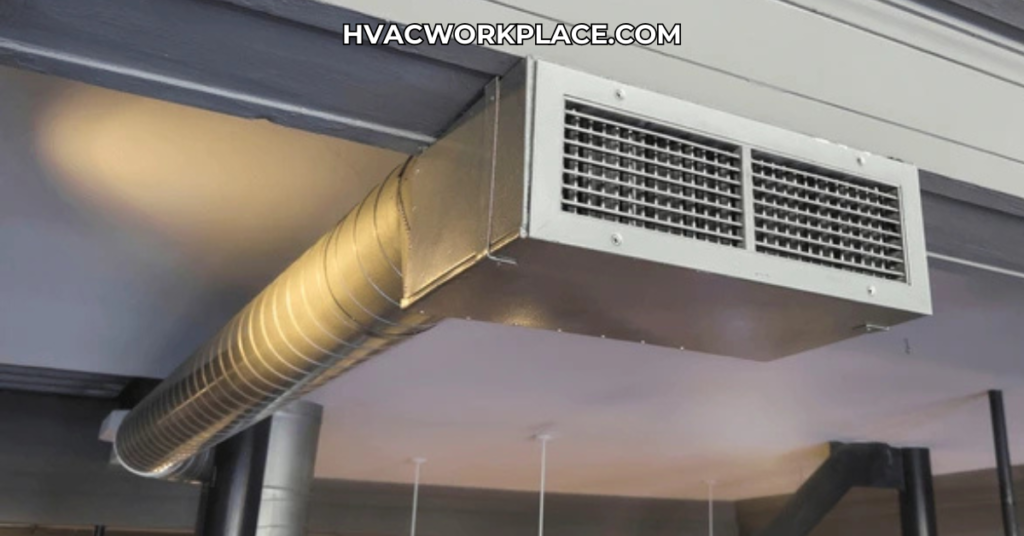Ducted air conditioning is one of the most effective ways to cool and heat your home, providing year-round comfort with a centralized system. Unlike split systems, ducted air conditioning operates through a series of ducts and vents, ensuring even temperature distribution throughout your home or office. However, using it incorrectly can lead to high energy bills and inefficient cooling or heating.
In this guide, we will cover everything you need to know about how to use ducted air conditioning efficiently. From understanding how it works to optimizing its usage and maintaining it for long-term performance, this article will help you make the most of your system while minimizing costs.
1. What is Ducted Air Conditioning?
A ducted air conditioning system is a centralized cooling and heating solution that consists of an indoor unit (usually located in the ceiling or under the floor), an outdoor unit, and a network of ducts that distribute conditioned air to different rooms via vents.
Types of Ducted Air Conditioning
- Zoned Ducted Systems – Allow users to control temperatures in different rooms independently.
- Non-Zoned Systems – Provide uniform temperature throughout the space, without the option to control individual rooms separately.
A well-planned ducted air conditioning layout ensures efficient airflow and maximized energy savings.
2. How Ducted Air Conditioning Works
Understanding how your ducted air conditioning system operates can help you use it more effectively:
- The outdoor unit draws in air and cools or heats it as required.
- Conditioned air is pushed through ducts and distributed via ceiling or floor vents.
- A thermostat controls the overall temperature, ensuring comfort and energy efficiency.
- Zoning allows you to regulate airflow in different areas, reducing unnecessary cooling or heating.
Proper use of ducted air conditioning layout ensures better air distribution and temperature control.
3. How to Use Ducted Air Conditioning Efficiently
To get the best performance from your system, follow these steps:
Setting the Right Temperature
- In summer, set your air conditioning between 22-24°C for efficient cooling.
- In winter, keep it around 18-20°C to reduce energy consumption.
- Avoid setting extreme temperatures as it increases energy costs.
Using Zoning Features
- Activate zones only in occupied rooms to reduce ducted air conditioning cost.
- Shut off airflow to unused areas to maximize efficiency.
- Adjust zone settings based on time of day and occupancy.
Optimizing Airflow
- Keep vents and ducts unblocked for better air circulation.
- Use ceiling fans to distribute cool or warm air more effectively.
- Ensure doors and windows are closed to prevent temperature loss.
Energy-Saving Tips
- Use timers and scheduling to run the system only when needed.
- Invest in a smart thermostat for automated temperature control.
- Insulate your home properly to retain cool or warm air longer.
4. Common Mistakes to Avoid
Avoid these errors to keep your system running efficiently:
- Setting temperatures too low or high – Drastically increases energy bills.
- Not using zoning effectively – Cooling or heating empty rooms wastes power.
- Neglecting maintenance – Dirty filters and blocked ducts reduce performance.
- Leaving the system running all day – Increases wear and tear unnecessarily.
5. Maintenance Tips for Long-Term Performance
Regular maintenance ensures your ducted air conditioning system runs smoothly and efficiently:
Cleaning and Replacing Air Filters
- Clean filters every 2-3 months to maintain airflow and efficiency.
- Replace filters if they appear damaged or clogged.
Checking Ducts and Vents
- Inspect for leaks or obstructions that could reduce airflow.
- Seal any leaks to prevent energy waste.
Professional Servicing
- Schedule an annual service to check refrigerant levels, ductwork, and thermostat calibration.
- Ensure the outdoor unit is free from debris and dust.
6. Cost Considerations and Energy Savings
Factors Affecting Ducted Air Conditioning Cost
- Installation Costs – Vary depending on home size and system capacity.
- Energy Consumption – Depends on temperature settings and usage frequency.
- Zoning and Automation – Helps reduce running costs by optimizing usage.
Comparing Running Costs
- Ducted air conditioning is more efficient than multiple split systems in large homes.
- Using a smart thermostat and zoning can cut costs by up to 30%.
- Well-maintained systems consume less energy and last longer.
Energy-Efficient Practices
- Use natural ventilation where possible.
- Upgrade to an energy-efficient model if your system is outdated.
- Install proper insulation to retain conditioned air.
Conclusion
Ducted air conditioning is a powerful and efficient way to maintain indoor comfort, but proper usage is key to maximizing its benefits. By setting optimal temperatures, using zoning smartly, and keeping up with maintenance, you can ensure long-term efficiency and cost savings.
Would you like get help with your ducted air conditioning system? Our expert AC technicians are available for your service, all you need to do is just contact us and schedule a free consultation.

